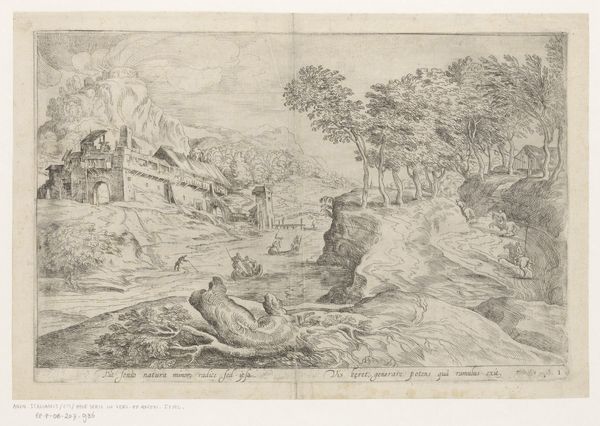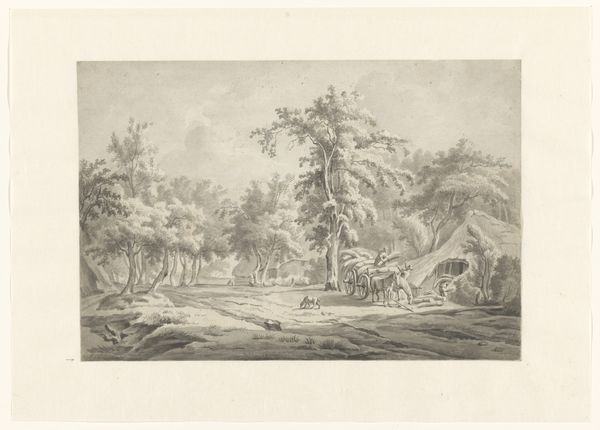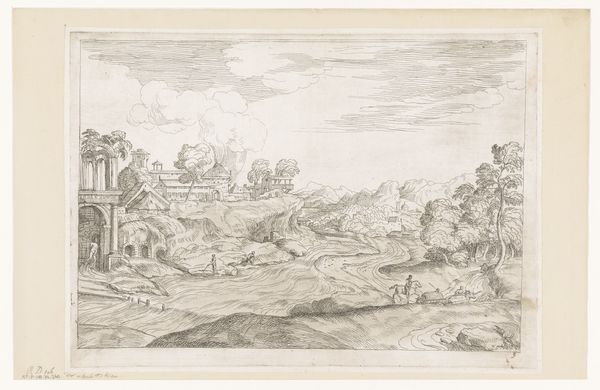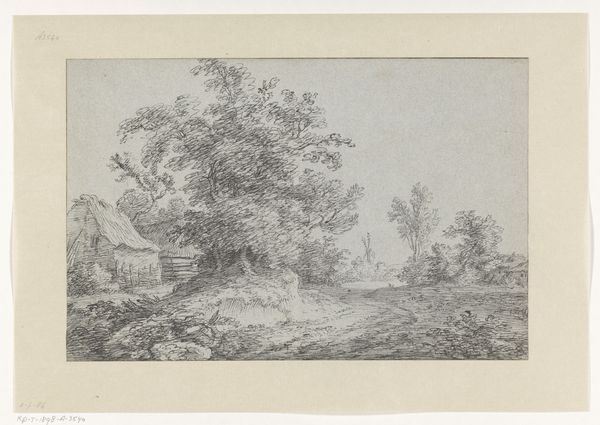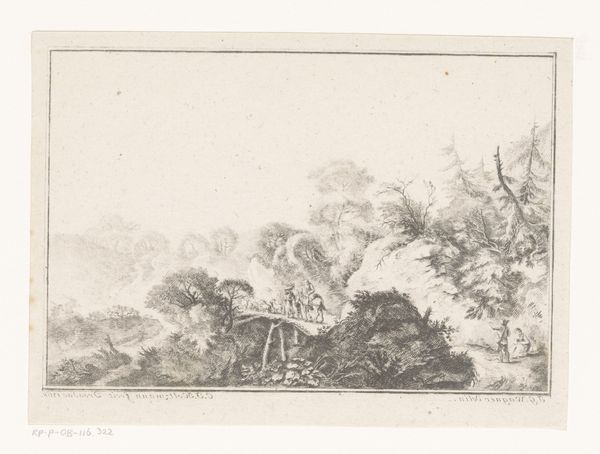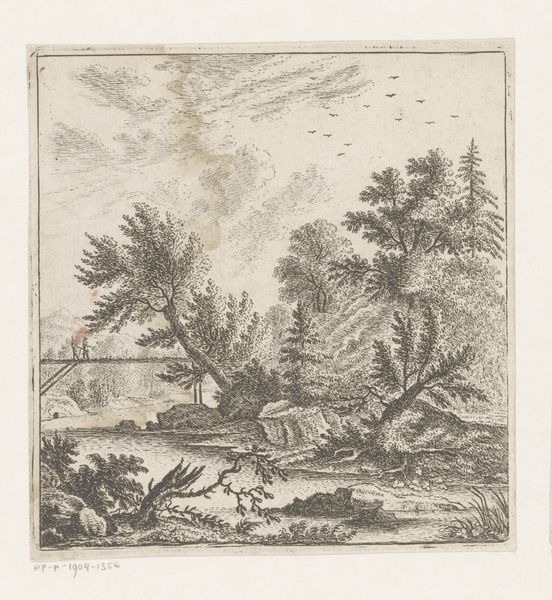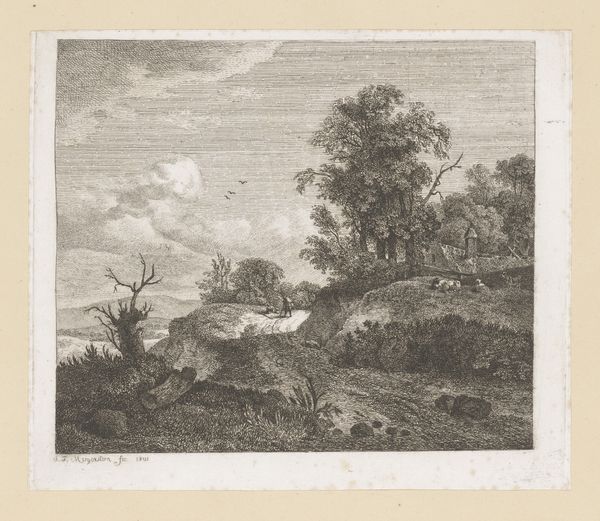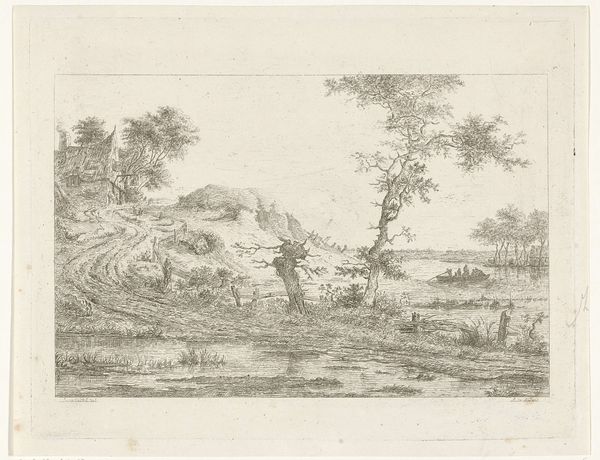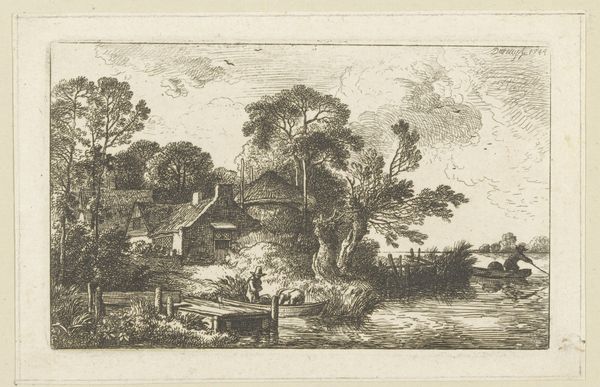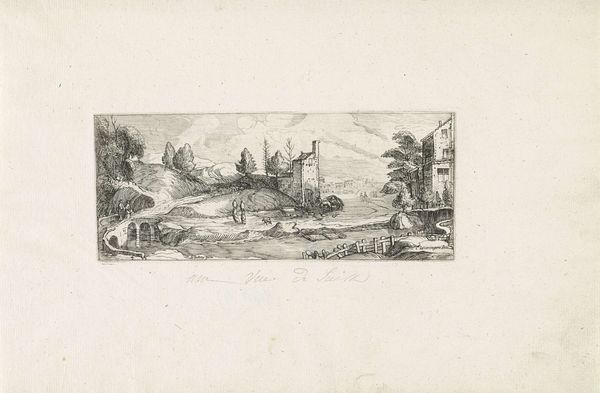
drawing, etching
#
drawing
#
baroque
#
etching
#
landscape
#
genre-painting
#
academic-art
#
building
Dimensions: height 230 mm, width 243 mm
Copyright: Rijks Museum: Open Domain
Curator: Welcome! We're standing before Jean-Baptiste-Denis Lempereur’s etching, "Woman with wash tub on a waterway," created in 1758. It resides here at the Rijksmuseum. Editor: The initial feeling is… worn. Not in a bad way, but this piece feels lived in. The landscape, the buildings, the woman, everything carries this heavy simplicity. Curator: Indeed. As a genre scene, it reflects 18th-century society through everyday labor. Consider the process of etching itself—acid biting into the metal, the skilled hand creating countless impressions. These are objects for consumption, offering glimpses into rural life for an urban audience. The labor involved isn't just the woman's at the stream; it’s embedded in the production of the artwork itself. Editor: The tub and the waterway are quite elemental, literally the source of the woman's work. There is a timeless aspect to washing at a river's edge. Curator: Precisely. The inclusion of the building signifies structure, human settlement interacting with the natural world. I would also suggest the materials themselves tell a story—the paper on which the etching is printed, the ink, their quality, all contribute to its market value. We should also ask ourselves how these depictions impacted perceptions of labor in this era? Editor: The visual cues present invoke that. Observe the building: simple. There's even what appear to be structural difficulties visible. A rustic, functional atmosphere permeates. It evokes that classic imagery associated with toil, struggle, maybe even a kind of virtuous hardship. This evokes the period with such depth, but in an artistic, palatable tone. Curator: The woman herself becomes part of the landscape, intertwined with the scene. The scale of production – multiples created, distributed – this is what fuels artistic trends, social commentaries, economies… It’s never just about one pretty image. Editor: No, definitely not. Thanks, in considering its symbolism and tangible value in one reflection, this piece now resonates on more complex registers for me. Curator: And by focusing on the production process and materials, perhaps we better understand the artistic intent and impact this had at the time of creation.
Comments
No comments
Be the first to comment and join the conversation on the ultimate creative platform.
